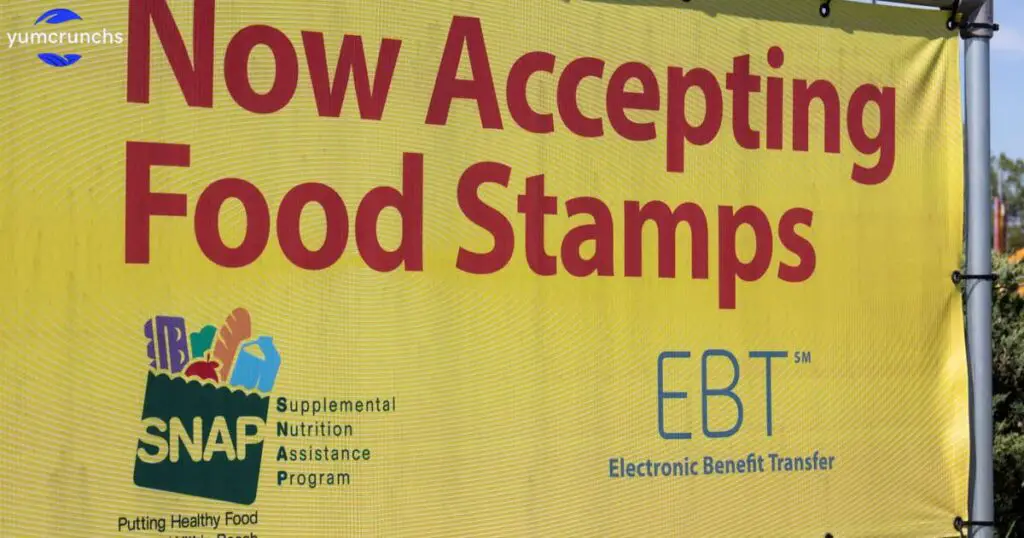In the United States, EBT, or Electronic Benefit Transfer, is commonly used by individuals and families who qualify for government assistance programs like SNAP (Supplemental Nutrition Assistance Program) to purchase food items. While EBT is typically accepted at grocery stores and supermarkets, there are also select fast-food chains that participate in the program.
Ever wondered if your EBT card could be used at your favorite fast-food joint? The answer might surprise you. While the majority of fast-food restaurants do not accept Electronic Benefit Transfers, there are a few exceptions. But which ones? And why do some accept EBT while others don’t? Let’s delve into this intriguing aspect of food assistance benefits.
McDonald’s and Subway are among the fast food chains that have participated in pilot programs allowing them to accept EBT in certain locations. However, the availability of EBT usage at these establishments can vary depending on the state and local regulations. So, before you head out with your Electronic Benefits Transfer card in hand, it’s best to check with the specific fast food place you plan to visit to see if they accept EBT as a form of payment.
Can I use EBT for fast food in Nevada?
In Nevada, you can use your (Electronic Benefits Transfer) card to buy food at approved places. But for fast food, it’s a bit different. You can’t use your Electronic Benefit Transfer card to buy fast food at regular restaurants like McDonald’s or Taco Bell. However, there’s a special program called SNAP Restaurant Meals Program (RMP) that allows some people to use their EBT cards to buy fast food at specific places.
To use your Electronic Benefits Transfer card for fast food in Nevada, you need to qualify for the RMP. Generally, you must be elderly, disabled, or homeless to be eligible. Also, not all fast food places participate in this program, so you’ll need to find ones that do. These spots typically display a sign saying they accept EBT for hot meals. So, if you meet the requirements and find a participating fast food joint, you can use your EBT card to grab a meal on the go.
Can you buy hot food with EBT in California?

In California, you can’t use your Electronic Benefits Transfer card to buy hot food from places like fast-food restaurants or hot food counters in grocery stores. The Electronic Benefits Transfer card is mostly for buying groceries like bread, fruits, vegetables, and other uncooked foods that you can prepare at home. This rule is set by the government to help people buy healthy food and cook it themselves, which is usually cheaper and healthier. TCS Food, a term commonly used in food safety regulations, refers to Time/Temperature Control for safe food, encompassing a range of perishable items requiring specific temperature control to prevent foodborne illnesses.
But there’s an exception! Some places accept Electronic Benefit Transfers for hot food if you’re part of specific programs like the CalFresh Restaurant Meals Program. This program lets certain homeless, elderly, and disabled people use their EBT cards to buy hot meals at authorized restaurants. So, while you can’t usually buy hot food with Electronic Benefit Transfer in California, there are special cases where you can.
Where can I use my EBT card in Arizona?
If you have an Electronic Benefit Transfer card in Arizona, you can use it at many places to buy food. These include grocery stores, supermarkets, and even some farmers’ markets. Just look for the signs that say “Electronic Benefit Transfer accepted” or “SNAP benefits welcome.” You can use your card to buy fruits, vegetables, bread, meat, and other foods that are good for you. Some places might have rules about what you can and can’t buy, so it’s a good idea to read them too easily. But overall, your Electronic Benefits Transfer card can help you get the food you need to feed yourself and your family.
Apart from food, you can also use your Electronic Benefit Transfer card at certain retailers to buy seeds and plants that grow food. This can help you start a little garden at home to grow your own fresh fruits and veggies. It’s a good way to save money and eat healthier too easily.
Some places might also let you use your Electronic Benefits Transfer card to buy hot meals, like from certain restaurants. This can be helpful if you don’t have a way to cook at home or if you need a quick meal while you’re out. So, keep your Electronic Benefits Transfer card handy, and you’ll have more options for getting the things you need to eat well in Arizona.
Can you use EBT at fast food in California?

In California, you can use Electronic Benefit Transfer (EBT) cards at some fast food places as part of the Restaurant Meals Program (RMP) run by the state. The RMP allows certain people who receive benefits like CalFresh, CalWORKs, or General Assistance to buy meals from approved restaurants. However, not all fast food places accept electronic Benefit Transfers. To find out which ones do, you can check the list of participating restaurants provided by the California Department of Social Services. If you’re wondering What Is Fast Food this program might offer some insights into its accessibility through EBT.
It’s important to know that not all fast-food restaurants participate in the program, and the rules can vary depending on where you are in California. Also, you can only use your Electronic Benefit Transfer card to buy certain items, like individual meals or combo meals, and you can’t use it for things like sodas or snacks. Make sure to check with the restaurant before ordering to see if they accept Electronic Benefit Transfer, and always follow the program guidelines to use your benefits correctly.
food places that take ebt
Food places that accept Electronic Benefit Transfer Electronic Benefit Transfer offer crucial support to individuals and families facing financial challenges. Electronic Benefit Transfer, often linked to SNAP (Supplemental Nutrition Assistance Program), allows recipients to purchase food items from approved retailers using a government-issued card. Finding food places that accept Electronic Benefit Transfer can be vital for those relying on this assistance to meet their nutritional needs.
Many grocery stores and supermarkets across the United States accept Electronic Benefit Transfer payments. These include well-known chains like Walmart, Kroger, and Safeway. Additionally, some farmers’ markets and smaller convenience stores may also accept Electronic Benefit Transfer, providing access to fresh produce and other essential items. However, it’s essential to confirm acceptance of Electronic Benefit Transfer before making purchases, as policies can vary by location. Some states even offer programs that incentivize the use of EBT at farmers’ markets to support local agriculture and provide healthier food options for EBT users.
FAQ’s
What fast food places accept EBT?
Some fast food chains like Subway, Papa Murphy’s, and Carl’s Jr. participate in the EBT program. However, acceptance may vary by location.
Can I use EBT at McDonald’s or Burger King?
Generally, McDonald’s and Burger King do not accept EBT cards for food purchases, as they are not part of the SNAP program.
Are there any nationwide fast-food chains that accept EBT?
Currently, no nationwide fast food chains accept EBT across all locations. However, some regional chains may participate in the program.
Conclusion
In this article, we’ve explored the accessibility of fast food places that accept Electronic Benefit Transfer (EBT) cards. By shedding light on this topic, we’ve provided valuable information for individuals relying on EBT benefits to access food options conveniently. From McDonald’s to Subway, the list of fast food establishments accepting EBT continues to grow, offering more choices for those in need of affordable and quick meals.
As we wrap up, you might be wondering about the potential impact of this accessibility on both individuals and the broader community. With more fast food places accepting EBT, it prompts consideration of the balance between convenience and nutritional value. How might this trend shape our eating habits and the dynamics of food assistance programs in the future?

Daniel, a seasoned author with 8 years of expertise in SEO, brings a delectable blend of culinary flair and digital finesse to the food niche on his website.











